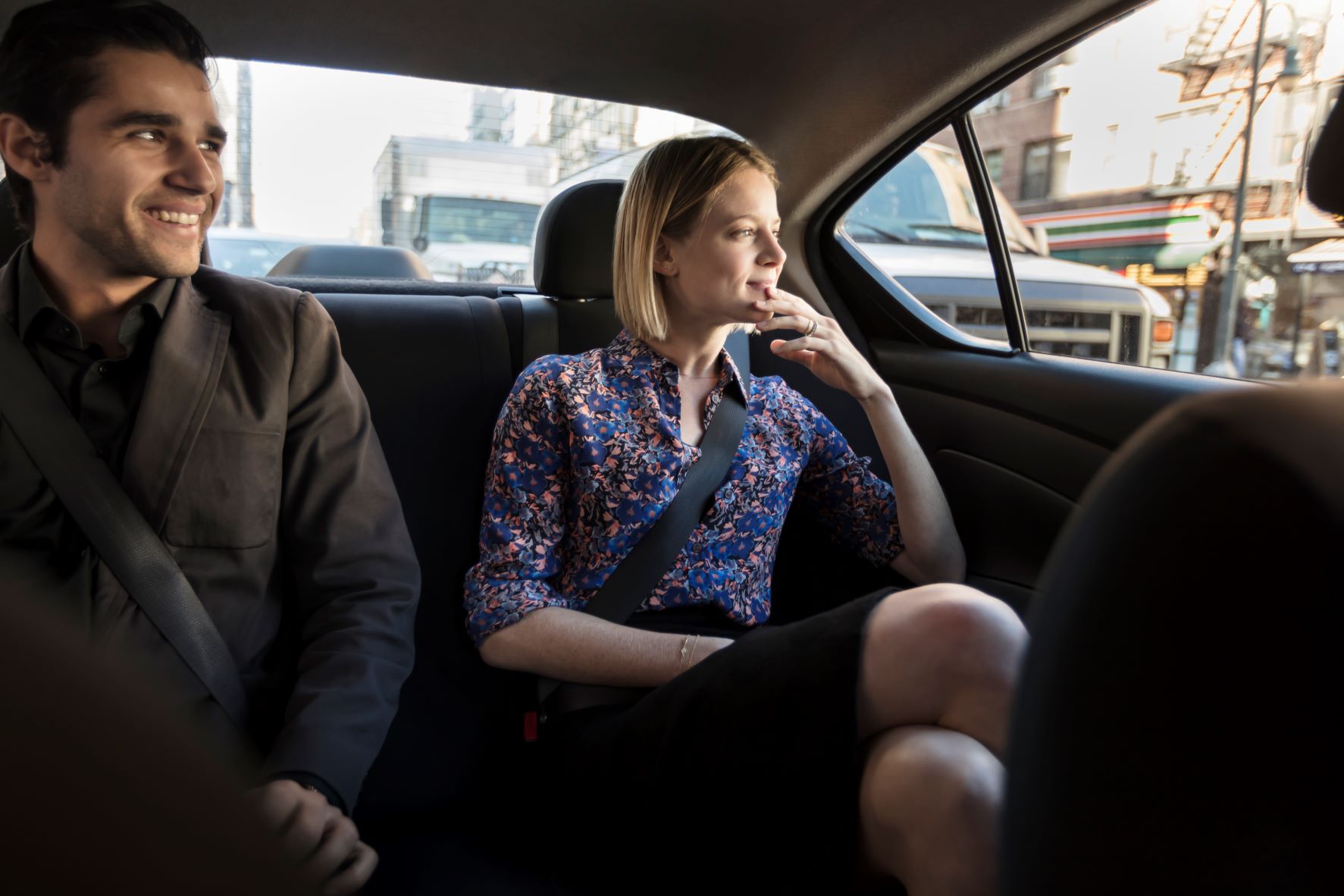Be a backseat buckler – even in a rideshare
Although nearly 90% of U.S. drivers say they faithfully use their seatbelts, the number drops significantly for passengers in the backseat – in our own cars and when we hop in rideshare vehicles. The Insurance Institute for Highway Safety surveyed adults and found that, overall, 27% of people ages 18 to 34 admit to failing to consistently wear a seatbelt when riding in the back. (The only group with lower usage were people ages 35 to 54, with 34% sometimes going seat beltless in the back.)
Alarmingly, unrestrained rear-seat occupants are nearly eight times more likely to sustain a serious injury in a crash than belted backseat passengers. That statistic helps illustrate that wherever passengers sit in a car, seatbelts are time-tested lifesavers. (The difference is even more dramatic for front seat occupants. The National Highway Traffic Safety Administration notes that for drivers and front passengers, using a lap and shoulder belt cuts their risk of fatal injury by 60% in a pickup, SUV or van and 45% in a car.)
 So why doesn’t everyone buckle up every time? These myths may be to blame:
So why doesn’t everyone buckle up every time? These myths may be to blame:
· The backseat is safer, so seatbelts are not important. The truth is the safety benefits of riding in the backseat don’t offset the need for seatbelts. While riding in the backseat can be safer than riding in the front because occupants are shielded from three common sources of crash injuries (the windshield, the dashboard and, for children, the deploying airbag), backseat riders still face risks from rear- and side-impact crashes as well as rollovers.
· Seatbelts might trap you in the backseat. Some fear they’ll be trapped in the backseat if their car catches fire or submerges in water. But those types of crashes are exceedingly rare – accounting for only 0.5% to 1% of accidents. Even then, seatbelts could save you from injuries that would prevent your escape.
· It's better to be “thrown clear” in an accident. Some people think that they might be safer to be thrown out of a vehicle in case of an accident. Unfortunately, ejection from a vehicle is a leading cause of fatal crash injuries.
· Airbags take the place of a seatbelt. Some people think that airbags provide enough protection that seatbelts are not needed. In fact, airbags are designed to work together with seatbelts – they are not interchangeable with each other.
· Seatbelts are unneeded if you’re only going a short distance. Seatbelts are designed to protect drivers and passengers in all lengths and types of motor travel. This is important – especially since an estimated 52% of accidents happen within a five-mile radius of home.
Important note: Seatbelts work best and prevent injury when worn correctly. (When worn incorrectly, they may cause injury.) When buckling up, be sure to:
· Buckle your seatbelt across your hips, not your stomach.
· Keep the shoulder harness on your shoulder – not tucked under your arm.
· Keep your seat as upright as possible.
· Keep kids in car seats and boosters until they outgrow manufacturer guidelines – and be sure they are buckled in properly (again, per manufacturer guidelines).
Let’s join together and make a New Year’s resolution worth keeping for you and everyone you travel with in motor vehicles: Buckle your seatbelt, every time and every vehicle you travel in -- no matter where you’re seated! And make sure others are properly buckled too!
Share on social media